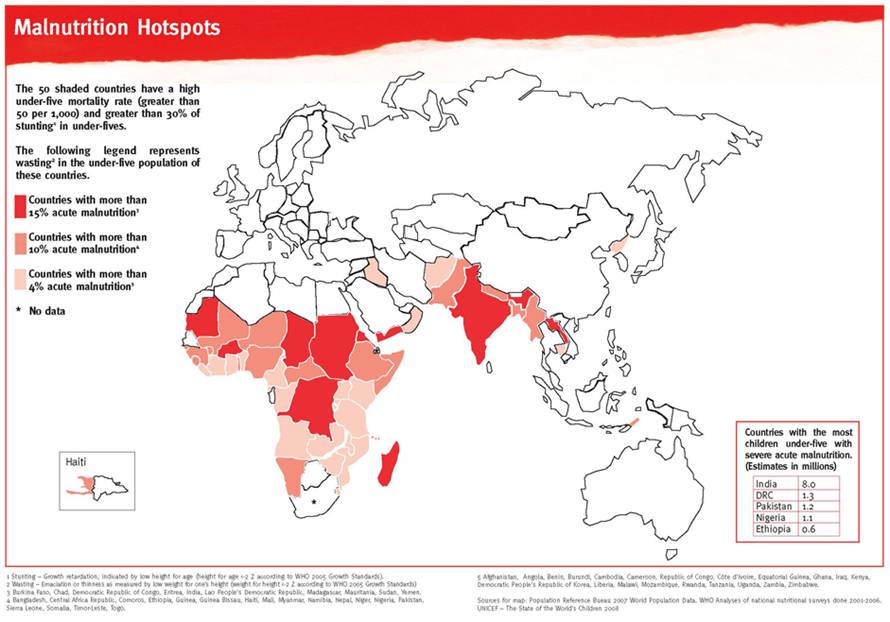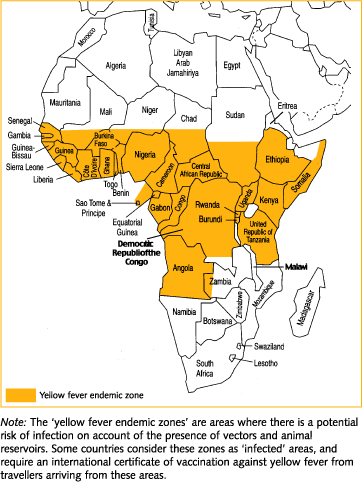Increasing evidence from scientists the world over indicates that many health outcomes — everything from life expectancy to infant mortality and obesity — can be linked to the level of economic inequality within a given population. Greater economic inequality appears to lead to worse health outcomes. By greater inequality, epidemiologists — the scientists who study the health of populations — don’t just mean poverty. Poor health and poverty do go hand-in-hand. But high levels of inequality, the epidemiological research shows, negatively affect the health of even the affluent, mainly because, researchers contend, inequality reduces social cohesion, which leads to more stress, fear, and insecurity for everyone.
Review the spatial distribution of health indices in Africa and worldwide.
The Equality Trust has also created an Index of Health and Social Problems to combine several indicators into a single variable that can be used to make describe the overall “health” of a society. The 10 indicators that make up the Index of Health and Social Problems are:
- Life expectancy
- Math proficiency and literacy
- Infant mortality
- Homicides
- Imprisonment
- Teenage births
- Trust
- Obesity
- Mental illness, including drug and alcohol addiction
- Social mobility
Excess Deaths Due to Inequality
A 2009 study in the British Medical Journal attempted to quantify the number of deaths that could be attributed to economic inequality among the 30 rich countries that make up the Organization of Economic Cooperation and Development (OECD). The researchers found an association between greater inequality and a higher overall death rate in countries where inequality runs relatively high. What constitutes “relatively high” inequality? To answer this question, the researchers ranked the 30 OECD countries in order of their “Gini index,” a standard metric that economists use to describe the level of inequality in a population. Ginis can run from 0.0 to 1.0, with higher numbers indicating greater inequality. The most equal country in the OECD, Denmark, has a Gini of 0.225. The United States ranks as the fourth-most unequal country, with a Gini of 0.357, following only Mexico, Turkey, and Poland. The median Gini among OECD nations, 0.3, became the reference point against which researchers compared countries and their death rates. The study concluded that almost 884,000 excess deaths per year in the United States could be attributed to the high level of income inequality in the U.S. In other words, if the Gini in the United States were 0.3 instead of 0.357, we would see nearly 884,000 fewer deaths per year.

Get More: Comedy Central,Funny Videos,Funny TV Shows
References and Resources
- HIV/AIDS: A crisis in Africa
- Farmer, Paul. 2001. Infections and Inequalities; the emergence of a modern plague. Available online: http://www.shi.or.th/upload/SHI_team/%E0%B8%A8%E0%B8%B8%E0%B8%81%E0%B8%A3%E0%B9%8C%E0%B9%80%E0%B8%AA%E0%B8%A7%E0%B8%99%E0%B8%B22553/Infections%20and%20Inequalities.pdf
- Popkin, Barry. 2001. ‘Nutrition Transition and Obesity in the Developing World’ Journal of Nutrition Vol. 131. Available online: http://jn.nutrition.org/content/131/3/871S.ful
For Discussion in Canvas
Visit the United Nations World Health Organization website and the United Nations Development Program website to collect health data and any health-related maps related to your selected country. What is the relationship to health and inequality in your selected country? How does your country rank internationally in terms of economics and health factors? What is the social distribution of health impacts within your selected country? Who is affected the most?
For Extra Credit
Watch and analyze the film ‘A Walk to Beautiful’ (Ethiopia) or the ‘Edge of Joy’ (Nigeria) and use the Inequality worksheet to address the problem presented in the film. Identify the different scales of inequality based vulnerability to fistula disaster (household, village, national, etc.) Who is affected and what are the risks? The films present a clinic as a solution, yet clinics only address the symptoms. Consider inequality as the root cause, and propose an intervention that will help prevent fistula disasters.








